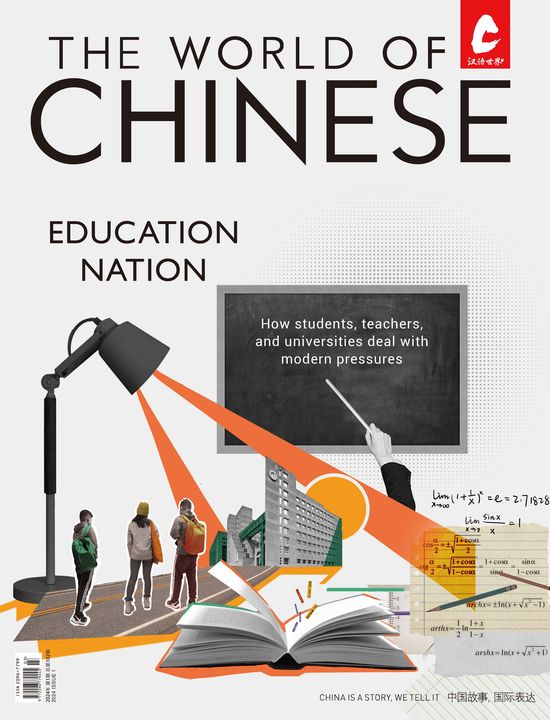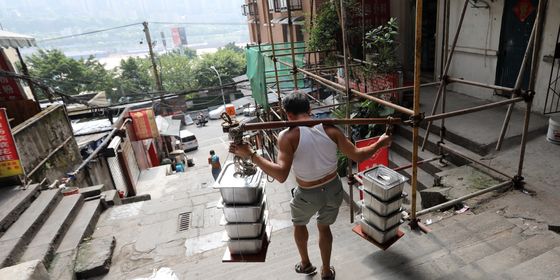A Chinese millennial couple creates contemporary Chinese sweets and designs that make a difference in daily life
Flanked by white fig trees and spicy noodle shops, Heshan Teahouse sits two floors below street level in a residential building on the southern bank of the Yangtze River. One gets there by taking a cable car across the river from the forest of skyscrapers in downtown Chongqing, looking for a shop sign that resembles a woodblock print of a few temples and pine trees atop a hill.
The teahouse is owned by Zhang Yipeng and Li Xia, a husband and wife team who both graduated from Beijing’s Central Academy of Fine Arts. Three years ago, they moved to Chongqing, Li’s hometown, to escape the monotony of work and life in Beijing, and rented and refurbished this old apartment for their business.
It’s a cozy, confined space, able to seat around 20 people at its antique wooden tables and chairs. The concrete floor and ceiling beams are bathed in the warm light cast by wire lamps hanging from the ceiling. Loose menu pages, each with an illustration and a poem that describes a certain food, sit neatly on the counter. Instead of serving sunflower seeds, peanuts, and candied fruits like most other teahouses, Heshan offers unique desserts of its own invention in the ancient tradition of chashi (茶食)—a loose term for snacks consumed while drinking tea.
A Chinese tradition as old as tea-drinking itself, chashi is believed to reduce irritations caused by the caffeine and tannins found in tea while also adding flavor to the meal. It dates back to banquets in the Jin dynasty (265 – 420), where tea replaced alcohol as the main drink and vegetarian food was served under Daoist influences. During its heyday in the Ming (1368 – 1644) and Qing (1616 – 1911) dynasties, chashi was found not only in elite gatherings but also in streetside teashops for commoners, and it became an all-encompassing term for snacks served with tea, ranging from brightly colored pastries to eggs cooked in tea brine.
Heshan’s menu features original creations like “Rain of Purple Beans,” a layer cake with mung beans and purple sticky rice; and “Plum Blossom of the Season,” a rice wine-flavored dessert in the shape of flowers found on the paving stones of the path leading to a nearby Daoist Temple. Zhang refers to the business as an experiment in aesthetics, and explains to TWOC the process of creating the menu and how Chinese elements in modern design can find their place in everyday life.
How a Chongqing Teahouse Fuses Art and Dessert is a story from our issue, “Something Old Something New.” To read the entire issue, become a subscriber and receive the full magazine.













